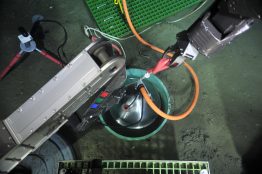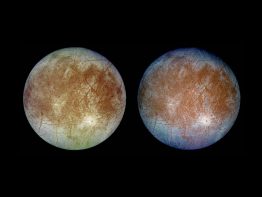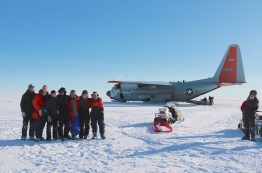Scientists and engineers from the UW School of Oceanography, Department of Earth and Space Sciences and the Applied Physics Lab, along with partners at Scripps Institution of Oceanography, recently were awarded more than $10 million to build an underwater observatory in the Cascadia subduction zone. The funding comes from the National Science Foundation and aligns with larger efforts to better understand subduction zones more broadly.
Read more »Experiments measure freezing point of extraterrestrial oceans to aid search for life
Researchers from the University of Washington and the University of California, Berkeley have conducted experiments that measured the physical limits for the existence of liquid water in icy extraterrestrial worlds. This blend of geoscience and engineering was done to aid in the search for extraterrestrial life and the upcoming robotic exploration of oceans on moons of other planets. The results were recently published in Cell Reports Physical Sciences.
Read more at UW News »How ‘ice needles’ weave patterns of stones in frozen landscapes
Nature is full of repeating patterns that are part of the beauty of our world. An international team, including a researcher from the University of Washington, used modern tools to explain repeating patterns of stones that form in cold landscapes. The new study, published Oct. 5 in the Proceedings of the National Academy of Sciences, uses experimental tools to show how needles of ice growing randomly on frozen ground can gradually move rocks into regular, repeating patterns.
Read more at UW News »South Pole and East Antarctica warmer than previously thought during last ice age, two studies show
The South Pole and the rest of East Antarctica is cold now and was even more frigid during the most recent ice age around 20,000 years ago — but not quite as cold as previously believed. University of Washington glaciologists are co-authors on two papers that analyzed Antarctic ice cores to understand the continent’s air temperatures during the most recent glacial period.
Read more at UW News »NSF-funded deep ice core to be drilled at Hercules Dome, Antarctica
Antarctica’s next deep ice core, drilling down to ice from 130,000 years ago, will be carried out by a multi-institutional U.S. team at Hercules Dome, a location hundreds of miles from today’s coastline and a promising site to provide key evidence about the possible last collapse of the West Antarctic Ice Sheet. The National Science Foundation has funded the roughly five-year, $3 million project involving the University of Washington, the University of New Hampshire, the University of California, Irvine and the University of Minnesota.
Read more at UW News »





